The word ‘safari’ in Swahili means ‘journey’.
Day 1 of my African Safari began at 2.30 AM when I bid goodbye to a sleepy Shan and was driven to the Julius Nyerere International Airport by 3 AM. Check-in & security cleared, I waited impatiently for the flight which would take me into the wilds of Africa.
4.45 AM: Our flight boarding was announced and as I walked across the tarmac, all I could see was a giant Turkish Airlines Boeing aircraft. ‘ Where is the Kilimanjaro flight?’, I asked an attendant and I was told it was on the other side of this large aircraft. Sure enough, after a few strides, I could make out the little Air Tanzania Bombardier. Quickly boarded and made myself comfortable. Minutes passed… it was 5.15 AM now but the aircraft showed no signs of taking off. All of a sudden, we were asked to get off the aircraft leaving our luggage behind. All of us were bundled into a bus (Yes, a bus now though we had walked and boarded the aircraft ). The bus moved slowly round the taxiway and runway and after around 7-8 minutes took us back to the same aircraft. I was zapped and asked the air-hostess what the issue was. Oh, she coolly replied — ‘ They had forgotten to ” put” water in the aircraft. I made a sarcastic remark -‘ Hope they haven’t forgotten to ‘put’ fuel in the aircraft. The sarcasm was lost on her.
The flight then took off, we were served a small cake and coffee/cool drinks on board and by 6.20 AM, we landed at the picturesque Kilimanjaro International Airport.
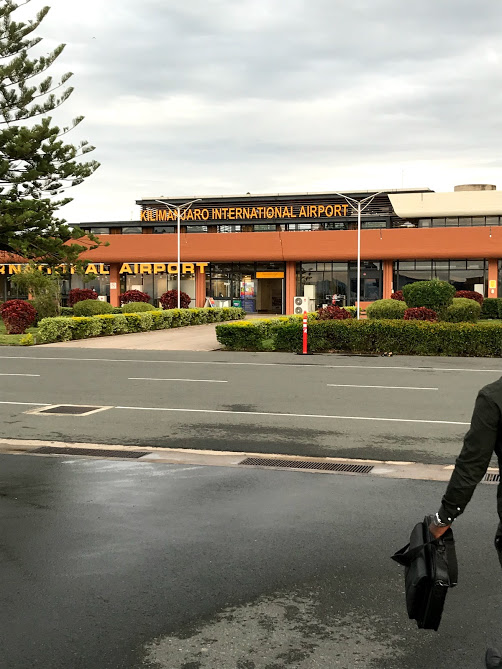
Surrounded by mountains, this airport serves the cities of Arusha and Moshi apart from being the gateway to the northern game parks — Tarangire, Lake Manyara, Serengeti & Ngorongoro and also to the mountain climbers of Mount Kilimanjaro. As I stepped out, I found a man with a placard – My tour operator, co-ordinator, guide-cum-driver for this safari — Godson David Silas. Quickly dumping my luggage in the old Land Cruiser, we started off. Told him that I was famished and should have breakfast first. Godson’s reply was that Arusha was around 50 kilometers away, an hour’s drive. We got talking about the vehicle and Godson informed me that almost all the vehicles used for safaris were either Land Cruisers or Land Rovers , 1978 or 1975 models. I was taken aback …. 40 year-old vehicles still in use! Godson smiled and said this did not refer to the year of manufacture but the year in which the model was launched. Toyota specially manufactures these vehicles for the African continent and makes available all the spare parts as well. Oh, so what was the year of make of this vehicle? 2000, he said. Still …… 19 years old and in most countries it would have been scrapped.In the next five days I would come to know about the ruggedness, power and reliability of this four-wheel drive jeep as we traversed muddy roads, small streams and steep slopes.
Arusha: The third largest city in Tanzania. Looked more of a small district town in India. Had a quick breakfast of a bowl of tropical fruits, omelette, toast and juice. Godson informed me that a special repellent to keep away the tsetse flies in Tarangire was needed. So got a can of this repellent spray and Godson got two boxes of packed dry lunch. Vegetarian, I inquired and he nodded in affirmation. We were ready for the 150 kilometers drive to Tarangire, which we opined should take two-and-half hours.
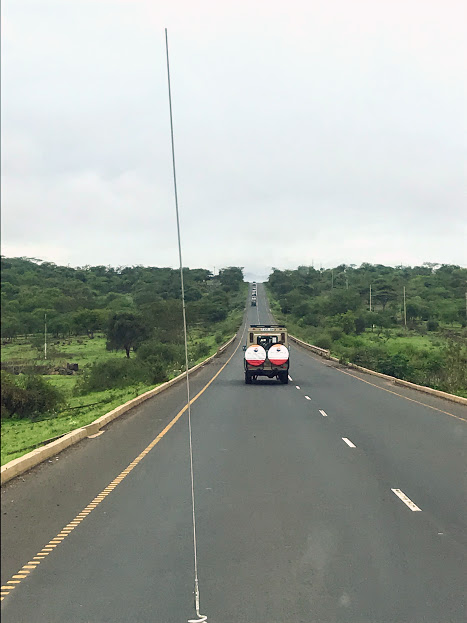
Soon we had left Arusha behind and were racing on the road flanked by greenery on both sides. Two aspects struck me — The road was ever so smooth and the adherence to traffic rules by all drivers. Every few kilometers we would find stretches where speed restrictions of 50 kmph were in place. Not only Godson but all drivers dutifully slowed down. Traffic policemen were present every few kilometers who I was told were always looking to make a quick buck by charging traffic violators. Perhaps this acted as a very big deterrent to motorists.
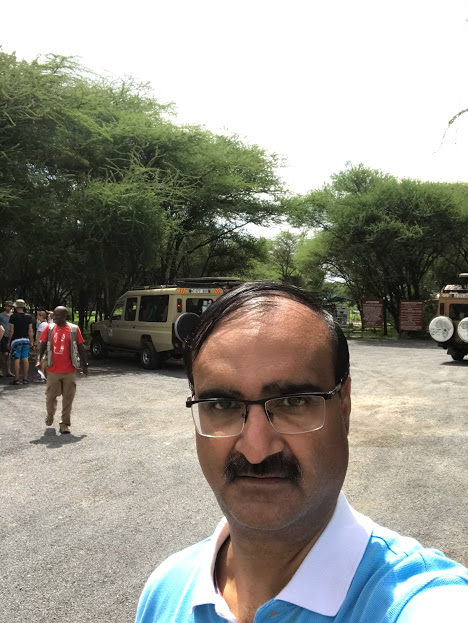
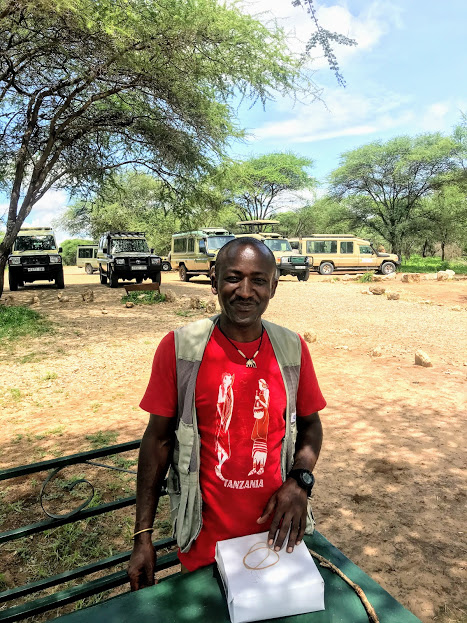
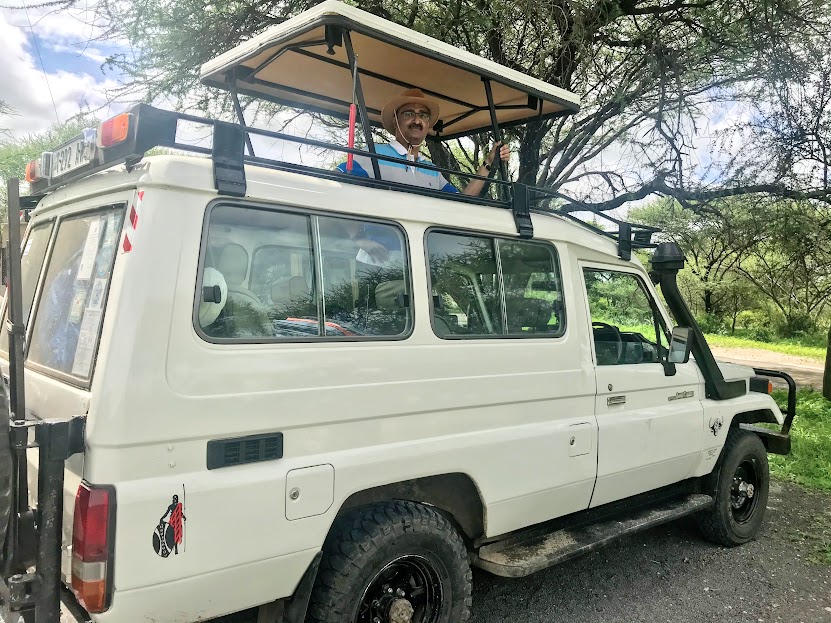
We were at the gate of Tarangire National Park. After our permits were checked, there was an attendant who sprayed the outside of our jeep with a repellent, yes, you guessed right.. to keep out the tsetse flies. Bio=break taken and we were raring to go.
The Tarangire National Park in the Manyara region is spread over 2800 square kilometers. Named after the Tarangire river which flows through the park and provides perennial water supply, the word ‘Tarangire means …. very surprisingly.. ‘River of Warthogs’. As the jeep bumped along the rough roads,I could make out that the surroundings were different from the flat, rolling plains one often sees on National Geographic or Discovery channels. This was wooded country with thick grass and apart from the acacia trees common everywhere in Tanzania, a specific tree, ‘the baobab’ was visible here. I was told these trees had huge quantities of water stored inside their trunks which was often made use of by animals. My eyes flitted from one side of the road to another to see if any of the Big Five was around.
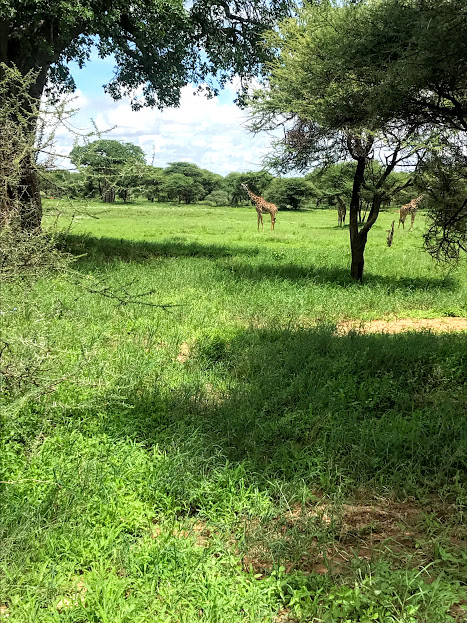
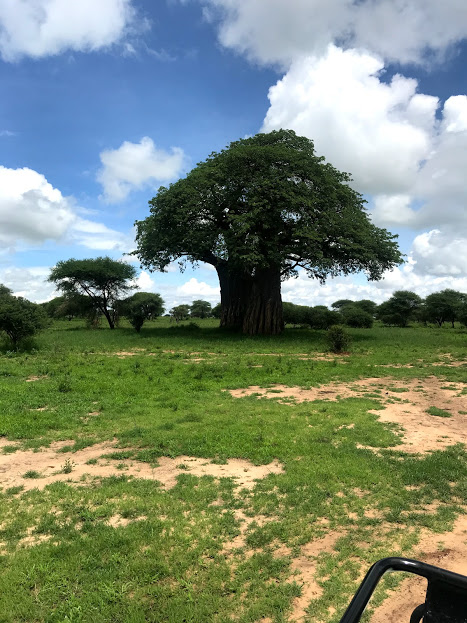
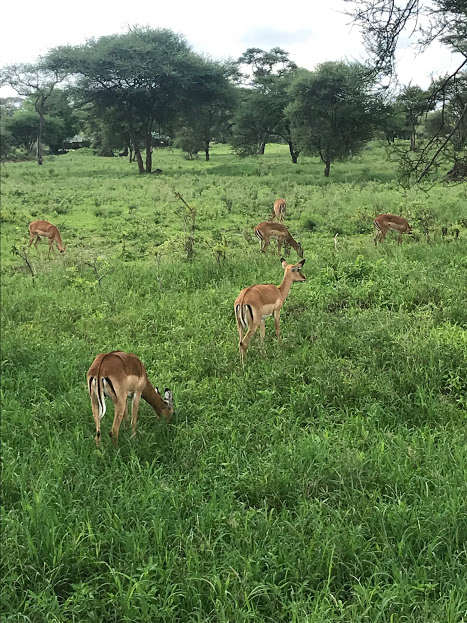
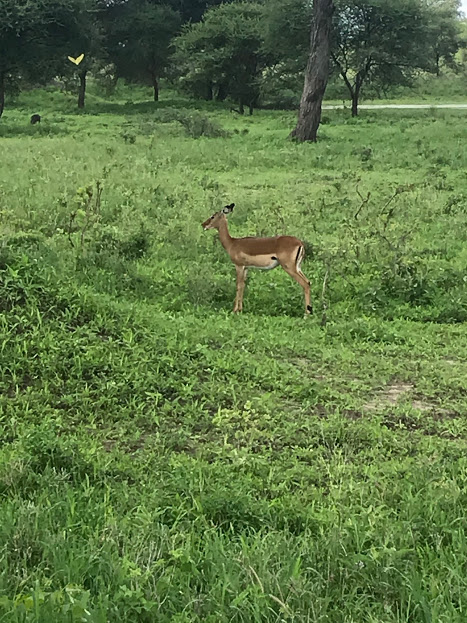
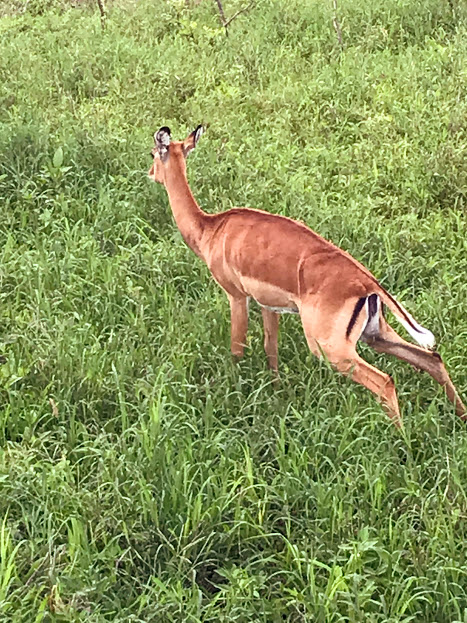
Herds of impalas and Thomson gazelles and suddenly…….. in a small clearing , giraffes browsing. Giraffes too are of different types, breeds or castes. The ones in Tanzania are Masai giraffes.
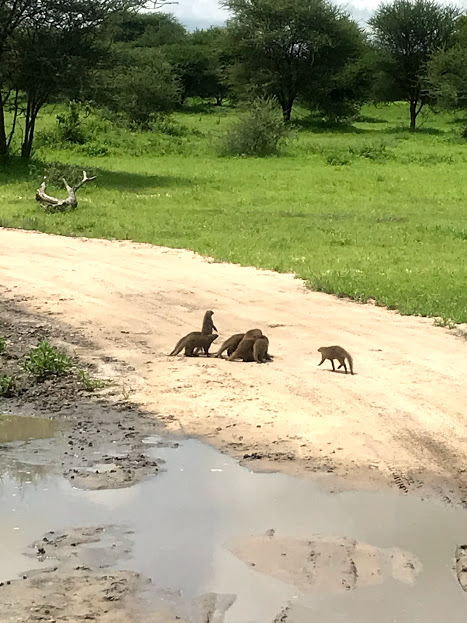
As we moved along, a pack of Banded mongoose crossed the road. Interesting to note that some among them draw themselves to their full height on two hind legs to act as ‘look-outs’ or security advisers to the pack. Still no sign of the Big Five. Hey, wait a second …….. the first of the Big Five…. in fact quite a few of them… the African Elephants. A little further…. more of them and some looking to cross the road as well.
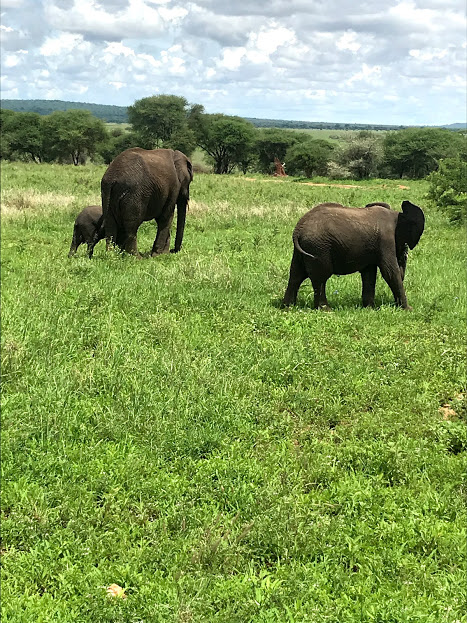
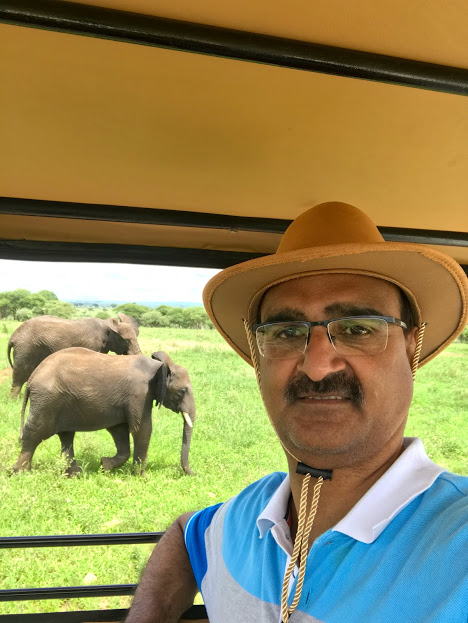
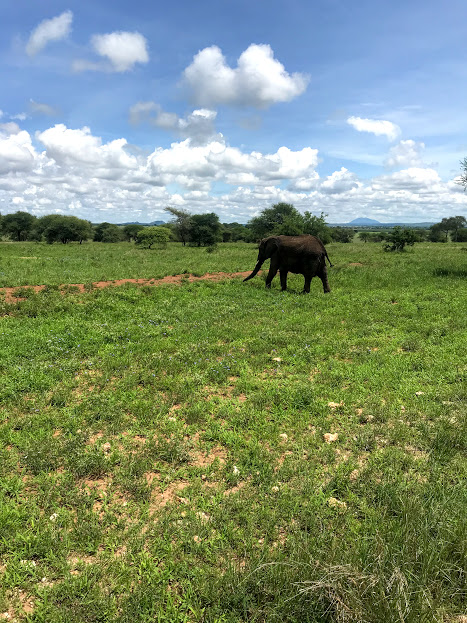
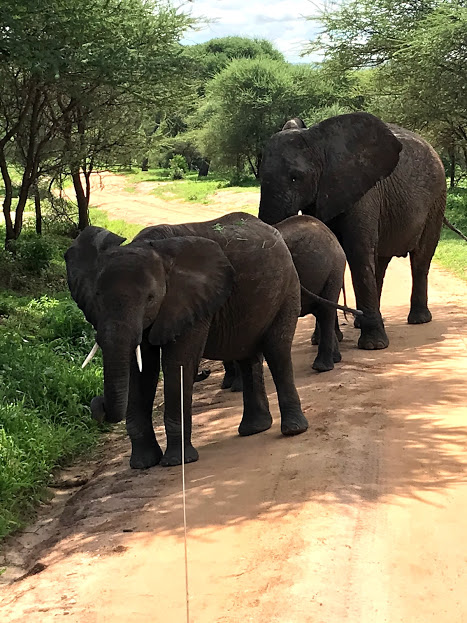
The baby elephants were truly adorable just as any babies are. They frolicked around between the legs of their mothers and one of them was drinking milk even as he moved from one side of his mother to another.
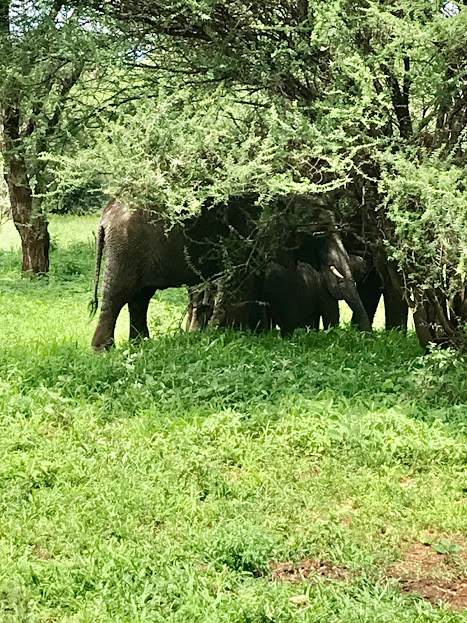
We were on the move again, a solitary jeep on that entire stretch, when Godson, stopped the jeep and whispered ” Leopard” pointing his finger. I could barely make out the large face of the leopard in the grass besides a tree. Was a little disappointed but not for long — Mr. Leopard decided to move and moved in our direction in a slow but powerful amble. He came nearer and nearer….. now he was just passing our jeep to the left. I looked at him in awe…… I have seen leopards in the past but this one was a large,powerful, healthy specimen. His coat of gold and black glistened under the African sun and I just stared forgetting to click his picture. Only after he had passed our jeep, I came back to normalcy and hastily clicked a shot of this magnificent beast. Only one other jeep had come over and witnessed the leopard as he moved into the thickets.
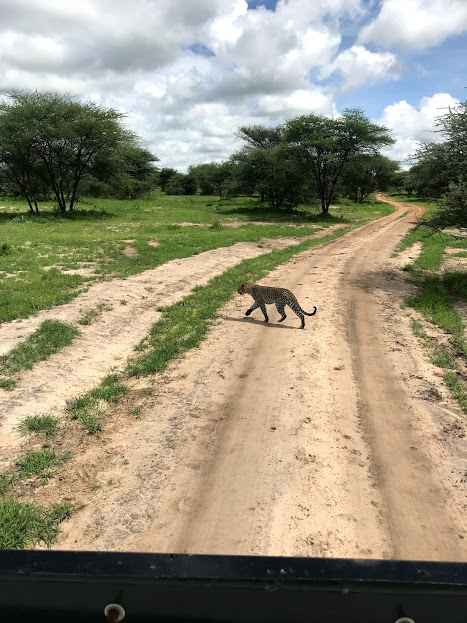
Two of the Big Five in one session including the elusive Leopard…….. my day was made, though we had not seen the King of the Jungle yet. It was time to break for lunch and we moved towards the picnic spot for our packed lunch. When on safari, everyone carries lunchboxes though the contents could be different. No Michelin starred restaurants nearby! The eating place is called a picnic spot but eating here was no picnic, with monkeys everywhere waiting to grab your food. We sat down at a table under a tree with Godson keeping a stick in one hand to shoo away the threatening monkeys. Lunch consisted of a bhajiya, cake, sandwiches and fruits, which we downed with juices. Time to continue our safari. It was around 2.30 PM and we started off again, this time to the higher reaches of the Park. The foliage got thicker and soon we were on the highest point of the park. We could see the Tarangire river raging below as also many small herds of elephants.
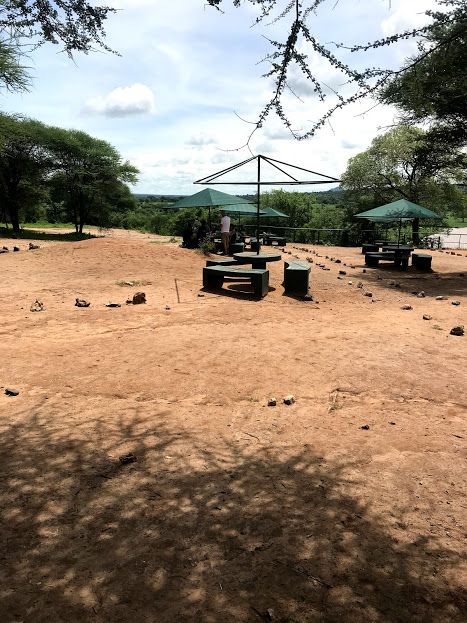

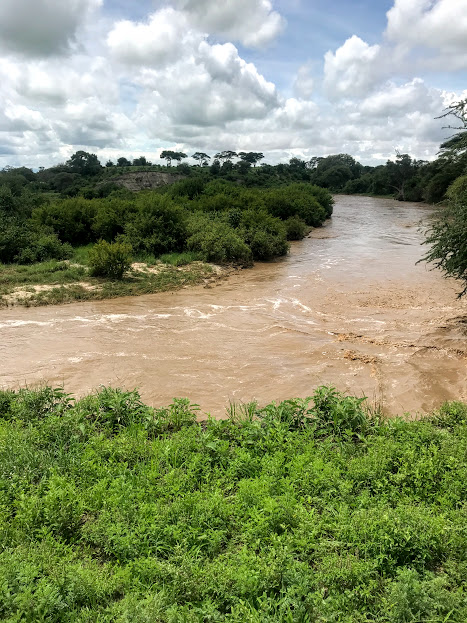
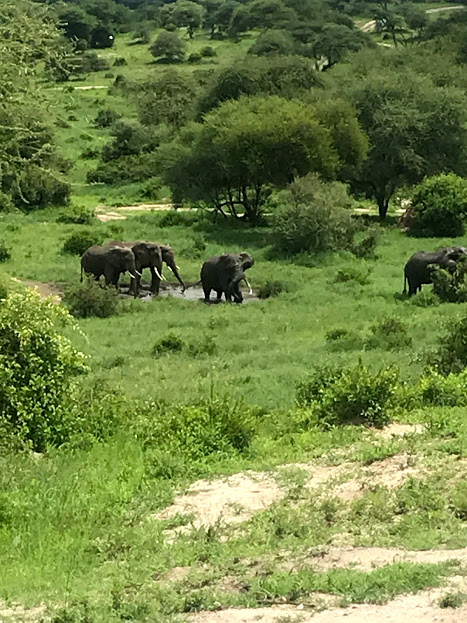
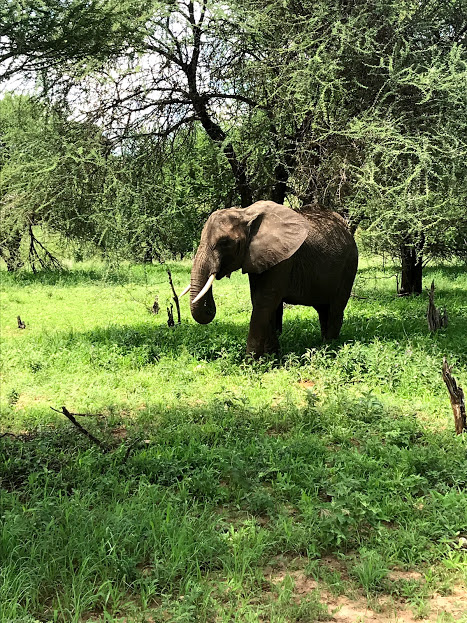
Back to the lower level and more and more elephants, some taking cool water baths and some taking mud-baths. Have never come across so many elephants in such a short time in a relatively small area. I was told that Tarangire has the highest density of elephants per square kilometer among all the national parks here. Some baboons on the ground, a surprised giraffe, a warthog and soon we were back at the gate, our safari for the day, done. Surprisingly, very surprisingly, we had not seen a single zebra or wildebeest, though I was told that between June and September, this place would be choc-a-bloc with zebra and wildebeest herds. There, near the gate I saw a huge skull of a dead elephant, possibly to show that elephants live and die here, this is their land.
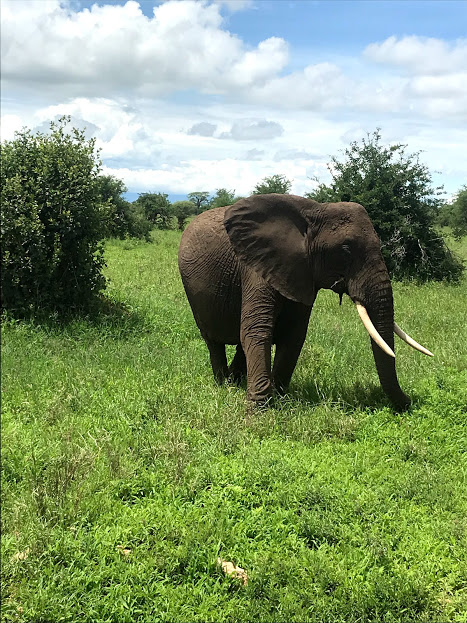
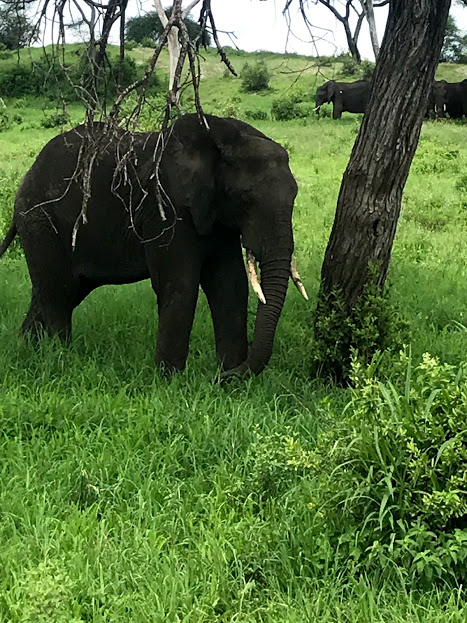
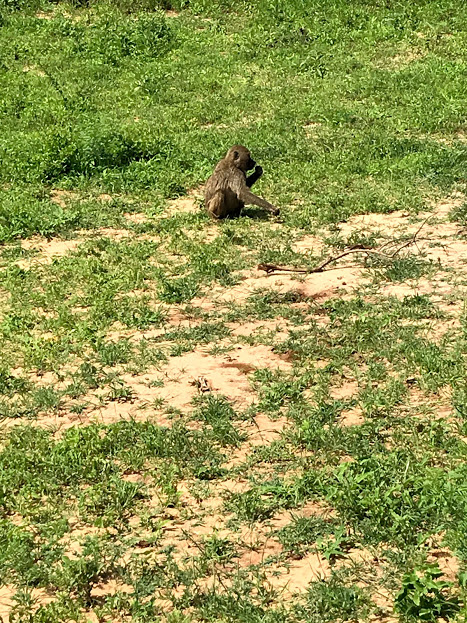
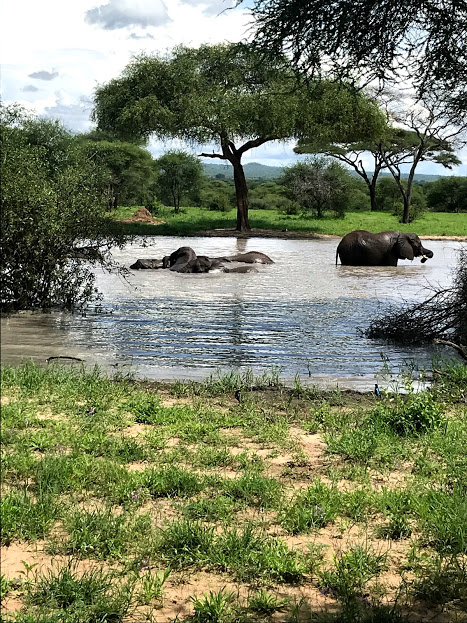


A two hour drive brought us to Jambo Lodge & Camping site in Mto Wa Mbu village just outside Manyara National Park. It had started raining and quite dark now. My tent was already pitched in the campsite and there were not many campers around. Met our cook for the safari, Nico who had joined us here and rustled up hot peanut soup, rice , vegetables and juicy fruits for dessert. The campsite has a swimming pool, a kitchen block, small dining area ( where we can charge our mobiles), a separate toilet block. Cleanliness of the toilets can be improved and the showers did not throw up hot water. It rained the whole night and there I was safely tucked up in my sleeping bag on top of a mattress, warm inside my tent. Drifted off to sleep quite early, clearly tired out by the travel and excitement.
Day 1 score : 2 out of 5 ( The Big Five)
Discover more from BalasBroadcast
Subscribe to get the latest posts sent to your email.

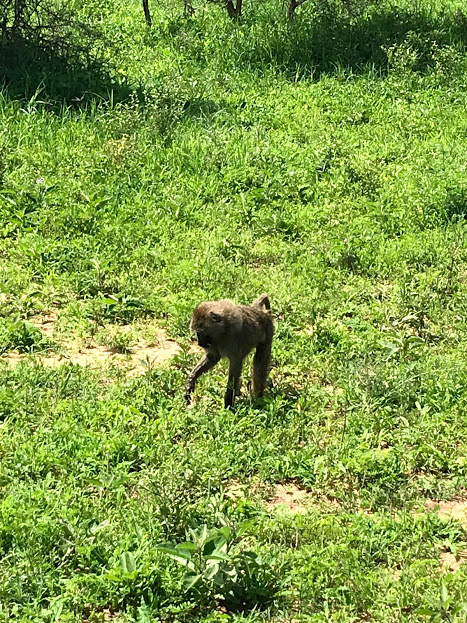

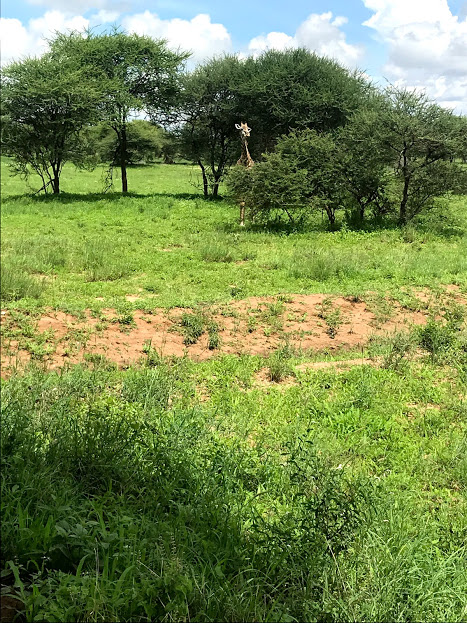
Wao…lovely pics…waiting for day 2..3…4 and 5